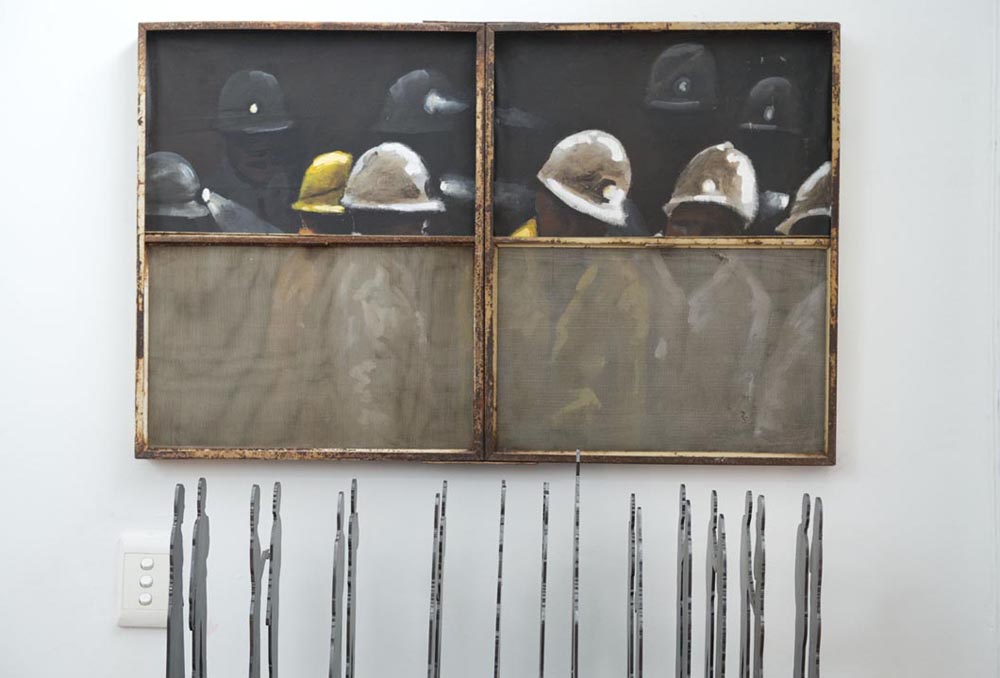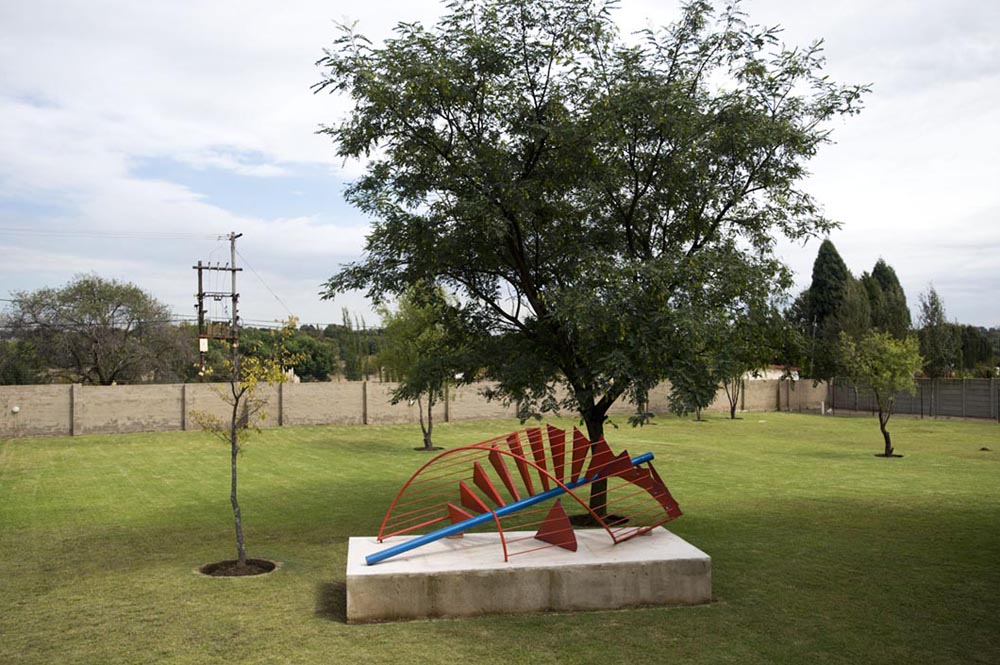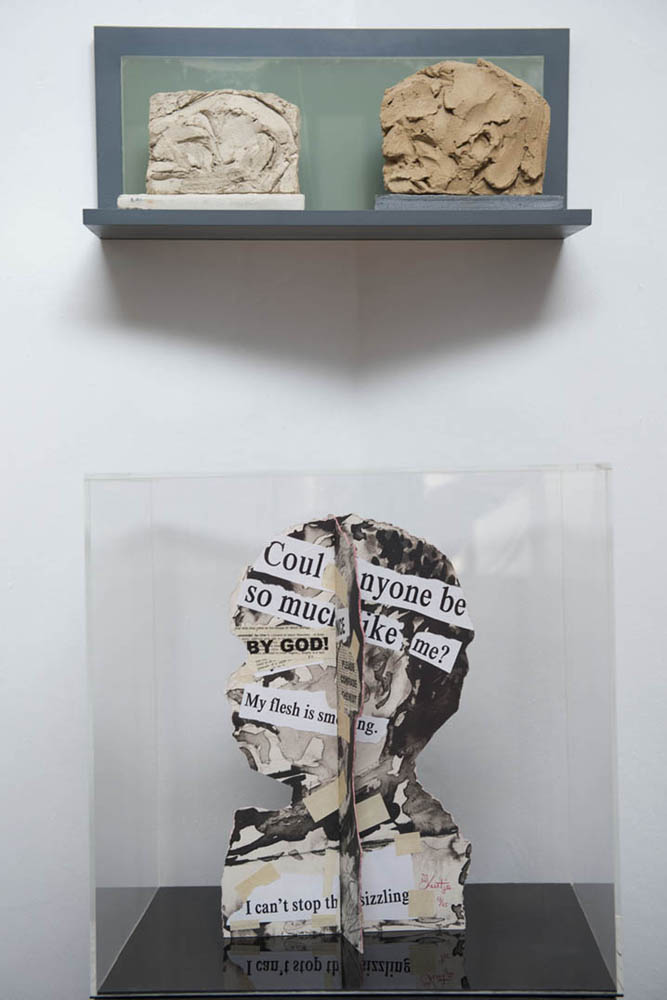Artist Sam Nhlengethwa.
‘I got into art from an early age,” recalls artist Sam Nhlengethwa as he scours through his 7?000 vinyls to select one.
I meet him during an uncomfortable week for Gauteng: it’s bitterly cold and power outages plaguing the province don’t make matters easier. Despite this, as the lights flicker on and off, Nhlengethwa takes me through his house and – with great detail and patience – recaps his past. He finally settles on a Keith Jarrett record.
“I started my art collection in 1977 doing my first year at Rorke’s Drift Art Centre,” he says about the art school, whose alumni of famous South African artists will feature in an exhibition, Impressions of Rorke’s Drift – The Jumuna Collection, at the National Arts Festival, which began this week in Grahamstown.
The young Nhlengethwa painted his surroundings during his two-year fine arts diploma at the Rorke’s Drift Art and Craft Centre in KwaZulu-Natal.
It is of significant historical importance to South Africa’s cultural landscape. Established in 1962 by Swedish missionaries, the Evangelical Lutheran Church Art and Craft Centre produced renowned artists such as Dumisani Mabaso, Kagiso Pat Mautloa, Kay Hassan and many more.
“I have works by my [now] Bag Factory colleagues such as David Koloane, Pat Mautloa and Kay Hassan,” he says about his Rorke’s Drift peers.
His enormous art collection fills the walls of his Benoni Small Farms house, and spills over into the cupboards and even under the beds.
He says the first piece of art he acquired was by a now-revered schoolmate: Mabaso – “it was a swap”.

“I acquired art during my first two years of studying by swapping art … I would visit my schoolmates, from dormitory to dormitory, and say, ‘Hey, I like that, let’s swap’ …
“When I returned home after completing my two-year diploma, I looked at my collection of prints I acquired from swapping and was surprised by how many pieces I had.
“After that I shelved them and seriously got into collecting art.”
“I remember my first serious pieces were two prints by Gerard Sekoto in 1989. I was fortunate to be part of a show with Sekoto, put on by the late, legendary art dealer Reinhold Cassirer, Nadine Gordimer’s husband. At the show, I sold some of my work to get two of Sekoto’s pieces. Years later, I now have five.”
He buys “from auctions, exhibitions and student exhibitions … I go to Everard Read, my gallery – Goodman Gallery – and the Bag Factory.
“I also buy from auctions and student exhibitions, like at Artist Proof Studio.”
Most prized work
Asked which is his most prized work, he says: “It’s not just one. I have a charcoal Maggie Laubser drawing and there’s a watercolour Gerard Sekoto, called The Travellers. The techniques in both pieces show a certain artistic maturity.
“I also find the silk detailing in a Billie Zangewa piece depicting a beach scene in Senegal, Dakar, beautiful.
“Lastly, it’s a piece by a friend and former colleague, the late Peter Clarke, from his Fanfare series, in which he dedicated collages to various people, such as Matisse and Paul Gauguin. The one that I have is dedicated to me.”
Other local favourites in his collection are by Winston Saoli, Leonard Matsoso, William Kentridge and the late Robert Hodgins, “with whom I had a two-man show in 2004 at Art on Paper”.
“It’s difficult to say” what he would like to add to his collection. “I usually don’t plan to buy art. I’d [rather] buy a rare jazz LP than an art piece, because my jazz hunting is an extension of my collection. Rare jazz vinyls don’t come cheap either.”
Inspired by townships
Born in Payneville, Springs, in 1955, he says it was “like Sophiatown with its forced removals; our parents had to move to KwaThema. It was during that time when apartheid was in fashion.”

Besides KwaThema, the other half of his childhood was spent under his grandmother’s watch in Ratanda, Heidelberg, and he acknowledges the townships’ streets and their shebeens as the source of his love and nonformal education.
“My inspiration comes from the township, like my own, KwaThema. While going into shebeens – where people talk about politics, education, jazz – elders would tell us about the past. You sort of had to make sure that your head became a recorder for the information.”
He painted a series on jazz. It included works dedicated to musicians such as Miles Davis and Abdullah Ibrahim, and it’s hard to separate the music from the artist. Nhlengethwa says his older brother was a jazz musician and got him involved in the genre.
“When I did some of my jazz art shows I was paying homage to my late brother, Ranky, who taught me so much.”
He graduated from the KwaZulu-Natal art school in the late 1970s, was the winner of the 1994 Standard Bank Young Artist award and was the cofounder of the Bag Factory Artists’ Studio in Johannesburg.
Black Consciousness Movement
According to an Art South Africa article about the Impressions of Rorke’s Drift exhibition, the art centre “triumphed over the struggles which black artists were undergoing to create art in the repressive society of that time … [it] nurtured and gave a voice to many talented artists who were denied the opportunity to further their craft due mainly to the newly established Bantu education policies.”
Recalling his years of living under a repressive apartheid system and working as a set designer at a then predominantly white SABC for almost 13 years after graduating, Nhlengethwa often quotes the Black Consciousness Movement leader Steve Biko’s adage: “Black man, you are on your own.”
It is 20 years since he resigned from the state broadcaster to pursue his art and he tells me how he applies Biko’s words, “I write what I like”, to his art: “I paint what I like.”
Referring to the past and present, when artworks such as Brett Murray’s The Spear are still being censored, he says: “I was never restricted under apartheid and I’m still not restricted under democracy. I just painted [a body of work on] Marikana.”
Like his depiction of the 2012 massacre, which left dozens of miners dead, in 1990, Nhlengethwa depicted another stain on the country’s history: the death of Biko.

‘Kind of Blue‘
Listening to him talk about his love for music and old cars, it’s not hard to see that he collects what he likes.
He says he started his jazz collection “around when I was 17. Some of the collection began with me stealing from my older brother [laughs]. The rest I bought.” Nhlengethwa tells me he has “over 7?000 vinyls and about 5?000 CDs”.
“The most vinyls I have collected at once was about four years ago in Vienna, Austria. I bought over 500 vinyls, which had to get shipped to South Africa.”
His favourites are “Ornette Coleman, Art Ensemble of Chicago and Keith Jarrett – he is my favourite solo pianist. I saw him perform in 1992 in London at Ronnie Scott’s [Jazz Club]”.
While his most valuable LP is “Miles Davis’s Kind of Blue 50th anniversary package. It includes LPs, a booklet and letters by Miles.”